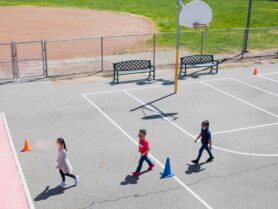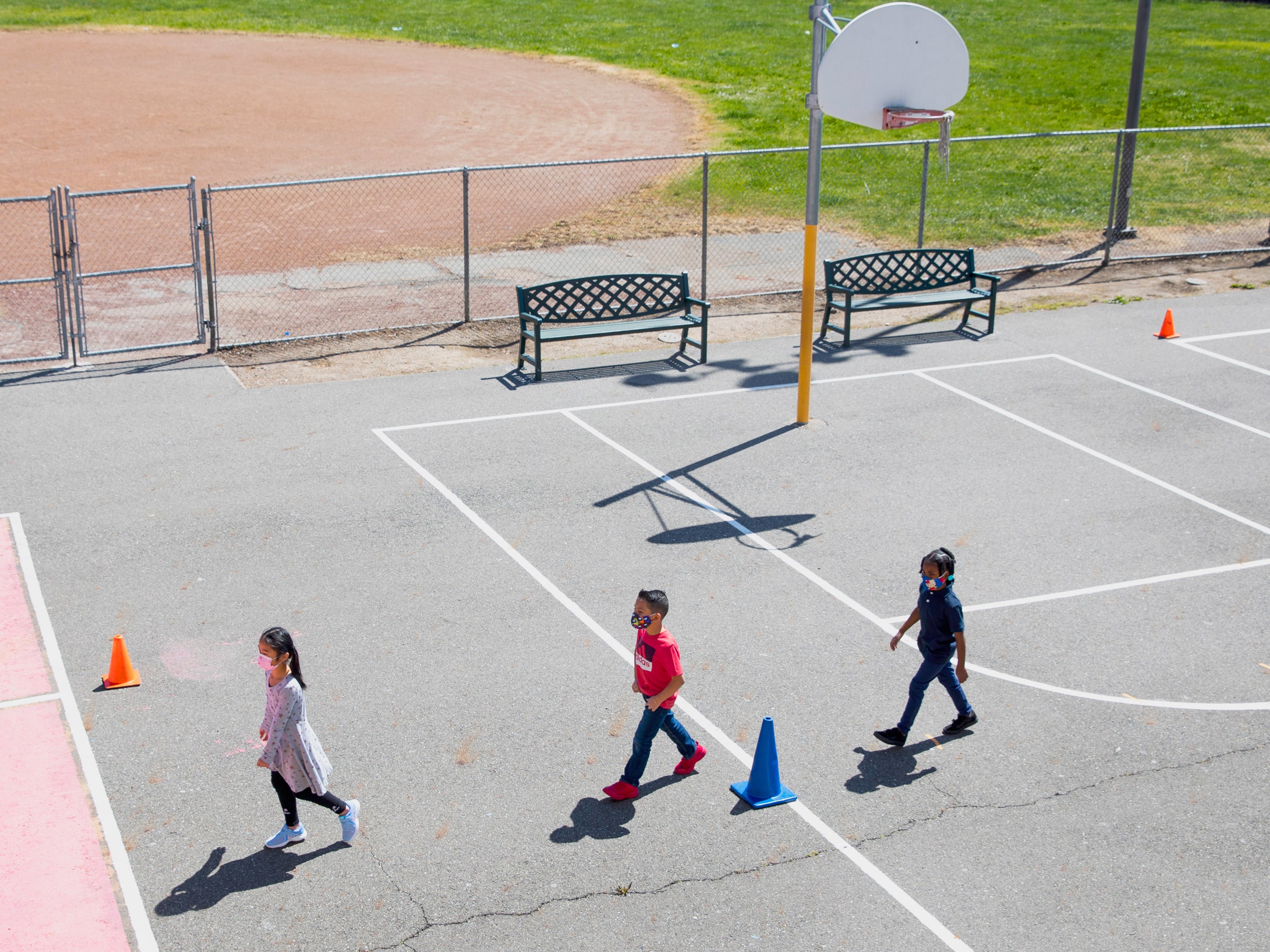Lessons and Reflections on School Physical Activity During COVID-19
- By: National Network of Public Health Institutes
- Date
Over the past year, the typical school day looked anything but typical. Instead of racing to beat the morning bell, for many, the school day began by logging into computers. Instead of switching classes and swapping stories from the weekend in the cafeteria, students stayed in cohorts and spent every day with the same friends and teachers. In-person instruction meant temperature checks, masks, and social distancing; virtual instruction meant self-paced learning and learning behind a screen. Many students never even came face to face with their teachers and classmates
Schools have always played a critical role in the health and wellbeing of young people, providing stability, a safe space, relationships, and opportunities to develop and practice new skills. But the COVID-19 pandemic pushed school leadership, teachers, students, parents, and caregivers to their limits, bringing new challenges daily all under the specter of uncertainty and fear surrounding this disease. A district leader described making decisions for her students as “difficult for me because of the huge unknown…so it was a scary thing to think about.”
For the past five years, our teams at the National Network of Public Health Institutes and Health Resources in Action have led Springboard to Active Schools, an initiative focused on promoting physical activity and physical education in K-12 schools across the country. When it comes to physical activity, schools are a prime way for young people to reach the nationally recommended 60 minutes of physical activity every day. In physical education, students gain the skills, knowledge, and confidence to be active for a lifetime. Recess offers an opportunity for free play and fun mixed with the chance to practice social emotional skills. Physical activity integrated into the classroom helps students retain what they are learning while building connections with their peers.
We have spent the last five years providing trainings and resources about the benefits of movement in schools and thought we had it all figured out. Then COVID hit.
I returned from maternity leave last July with a new project directive sitting in my inbox: promote strategies and ideas for continuing physical activity and physical education in schools – whether in-person, virtual, or hybrid – during COVID. No small feat, right? School decisionmakers were still in the middle of figuring out what school was even going to look like in the fall, and we were being asked to be that small voice in the back of the room saying “…but what about physical activity?”
I thought for sure practitioners in the field were going to roll their eyes. If decisionmakers were still unsure their plans for instruction to keep students healthy and safe, were we really going to ask them to come up with a plan for keeping students active?
What I found instead was a community yearning for information and connection. Over the past year, I heard from school leaders – superintendents, principals, classroom teachers – who made sure young people had opportunities to move throughout the school day, no matter the form of instruction. I heard from communities who – in the midst of their grief over losing elders and loved ones – still worried for their young people and stayed committed to their health and wellbeing through movement. I also heard from and worked alongside numerous national partners who leapt into action, hosting daily virtual recess and removing paywalls so everyone could access their resources.
Our team quickly realized that people were hungry for resources, for anything that would help students stay engaged and connected. We answered that call by creating resources with guidance and ideas and tips for classroom physical activity during COVID. The purpose of these resources was to spell out easy-to-use, back-pocket, oh-my-goodness-all-my-students-look-so-disengaged-what-can-I-do activities that anyone could use to get students up and moving in any type of classroom.
We wanted to build the confidence of everyone we interacted with to show them how easy it is to integrate movement into learning, so we modeled activities, created instructional videos, and led live sessions so others could practice activities for themselves. We hosted webinars and trainings and spoke at virtual conferences to get our resources into the hands of those who needed them. We partnered with Active Schools to host Active Classrooms Month – a whole month of live physical activity boosts and webinars to show how to keep students moving no matter the learning environment. All of this was our small part to help make a teacher, a parent, or a caregiver’s day a little easier.
As much as I expected pushback, our job was easy the last year. More than ever, the adults supporting and caring for young people understood that they had to do something to make sure students stayed engaged. The pandemic seemed to crystalize for so many people that taking time to move their bodies is critically important. Students couldn’t sit still – literally – behind a screen all year. They had to move, get up, and explore.
Springboard to Active Schools hosted a webinar recently on how schools provided recess over this past year. One quote in particular from that event stood out to me. Dr. Chris Wilson, Superintendent of Kennett Schools in Missouri said, “We all know recess is important, we all know it’s fun, we all know kids love it, but how important it really is – the social emotional side…maybe we took it for granted a little bit before…”
Movement benefits all aspects of a young person’s health and wellbeing. It connects students to each other and to teachers. It allows them to practice cooperation, following rules, problem-solving, negotiation, sharing, and communication. It helps them become better learners. It helps them build skills and knowledge they can use the rest of their lives. And, of course, it’s fun.
My hope is that these “a-ha” moments around movement don’t go away once schools reopen in the fall. Getting young people up and moving was important this past year, but we know it’ll be just as important next year and for all the years to come.


 Subscribe To Our Communications
Subscribe To Our Communications